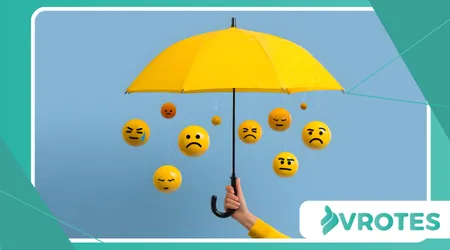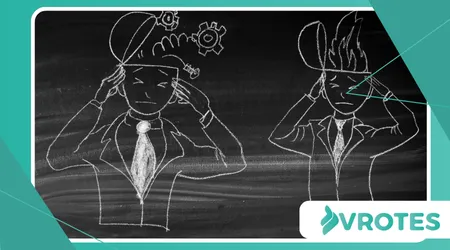Digital Overstimulation and Emotional Burnout

The modern epidemic of Digital Overstimulation and Emotional Burnout has become a silent adversary, eroding our mental fortitude and sense of self.
Anúncios
We’re living in an era of unprecedented connectivity, where a constant stream of notifications, updates, and information bombards our senses.
This relentless digital deluge, far from enriching our lives, is quietly overwhelming our minds and bodies.
Navigating this hyper-connected world requires more than just a good Wi-Fi signal; it demands a conscious strategy to protect our inner peace.
The line between being informed and being inundated is thinner than ever, and many of us are unknowingly crossing it every day.
Anúncios
This isn’t just about screen time; it’s about the cognitive load each interaction places on us.
The Brain on Digital Overload
The human brain, an incredible organ, is not designed to process the sheer volume of information we consume daily.
Our primitive hardware struggles to keep pace with the 24/7 news cycle, social media feeds, and the endless scroll of content.
This constant state of ‘on’ keeps our nervous system in a perpetual state of alert.
Consider a simple analogy: our brains are like a high-performance sports car, but we’re constantly driving it at top speed without a break.
Eventually, the engine will overheat. That’s what emotional burnout feels like—the cognitive engine seizing up under immense pressure.
Read more: The Link Between Gut Inflammation and Anxiety
This relentless demand for our attention depletes our mental reserves. Our ability to focus, make decisions, and even feel empathy begins to wane.
We might find ourselves increasingly irritable, anxious, and detached from the present moment. This is a clear signal that the digital world is taking a toll on our emotional landscape.

The Cost of Constant Connectivity
What is the true price of this hyper-connectivity? The costs are profound and extend far beyond a simple feeling of fatigue.
The persistent engagement with digital stimuli alters our brain chemistry, particularly dopamine pathways, leading to a need for constant stimulation.
A 2023 study by the Pew Research Center found that 46% of U.S. adults say they are online “almost constantly.”
This staggering figure highlights a societal shift where being digitally present is the norm, not the exception. Yet, this presence comes at the expense of our mental and emotional health.
The pressure to maintain a curated online persona, to be always available and responsive, adds another layer of stress.
Read here: Why Qi Gong Improves Joint Health Beyond Flexibility
We compare our unfiltered reality to others’ highlight reels, fostering feelings of inadequacy and loneliness.
This social comparison, fueled by algorithms, is a major contributor to feelings of anxiety and depression.
Recognizing the Symptoms of Digital Overstimulation and Emotional Burnout
Identifying the signs is the first step toward regaining control. Symptoms can be subtle at first, like a shortened attention span or difficulty sleeping.
Over time, they can escalate into more severe issues like chronic fatigue, heightened anxiety, and a complete lack of motivation.
A person might find themselves endlessly scrolling through social media, even when it brings no joy.
Another might feel a sense of dread when a new work email arrives late at night. These are not just bad habits; they are markers of a deeper exhaustion.
++ Menopause-Triggered Migraines: Understanding the Hormonal Link
Consider the example of Alex, a freelance graphic designer. For months, he felt the need to be on social media at all hours, convinced that being offline would mean missing out on a project.
This constant pressure led to sleepless nights and a creative block. He was emotionally burnt out, not from his work itself, but from the relentless digital demand surrounding it.

Strategies for Digital Wellness
Combating the Digital Overstimulation and Emotional Burnout crisis requires intentional and deliberate actions.
It’s not about abandoning technology entirely but about redefining our relationship with it. Setting clear boundaries is essential.
Create “tech-free zones” in your home, like the bedroom or dining area.
Schedule specific times for checking emails and social media, rather than allowing notifications to dictate your day. This small change can reclaim your attention and your mental space.
Another effective strategy is to engage in a digital detox. This doesn’t need to be an extreme measure. Start with just a few hours a week—or even a full day—away from all screens.
Use this time to reconnect with yourself and your physical environment. Read a book, go for a walk, or simply sit in silence.
| Impact of Digital Overload on Well-being |
| Increased Anxiety and Stress |
| Decreased Attention Span |
| Impaired Sleep Quality |
| Feelings of Social Isolation |
| Reduced Creativity and Productivity |
These simple changes can have a profound effect, acting as a reset button for our nervous system.
By consciously choosing to unplug, we are sending a powerful message to our brain: “It’s okay to rest.”
Reclaiming Our Mental Space
Ultimately, the fight against Digital Overstimulation and Emotional Burnout is a personal one. It’s about recognizing that our emotional well-being is not a luxury; it’s a necessity.
We are the architects of our digital lives, and we have the power to design a more balanced and humane existence.
The endless scroll and the constant buzz of notifications offer a fleeting sense of connection, but they often leave us feeling more isolated than before.
We must actively seek out real, in-person connections and meaningful experiences that technology can’t replicate.
Isn’t it time we started prioritizing our inner peace over our online presence? The choice is ours, and the benefits of a calmer, more focused mind are immeasurable.
Frequently Asked Questions
What is the difference between Digital Overstimulation and Emotional Burnout?
Digital overstimulation refers to the constant bombardment of information and stimuli from digital sources, while emotional burnout is a state of emotional, mental, and physical exhaustion caused by prolonged stress, often fueled by this overstimulation.
How do I know if I’m experiencing burnout?
Common signs include chronic fatigue, cynicism, irritability, a feeling of detachment, and a reduced sense of accomplishment.
These symptoms persist over time and can affect all areas of your life.
Is it necessary to completely quit social media?
No, it’s about balance, not total abstinence. Setting boundaries, curating your feed, and taking regular breaks can be just as effective as quitting completely.
The goal is to use technology as a tool, not to let it control you.
How can I help a friend who is experiencing burnout?
Listen without judgment, encourage them to seek professional help if needed, and model healthy digital habits yourself. Suggest activities that don’t involve screens and offer your support.
++ The Intersection of Information Overload, Emotional Exhaustion, and Social Media Fatigue
++ Demystifying the New Dilemma of Brain Rot in the Digital Era
